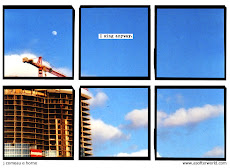Every Tuesday night I head over to Casa de las Comunidades, a Catholic Worker house on the other side of Albuquerque that provides transitional apartments for those in need, many of them families of undocumented persons. Sr. Teresa and Alan, the folks who run the place, are wonderful, and they also organize advocacy, prayer groups, and ESL classes. Tuesday nights are ESL, and I get to hang out with the kids while their parents are in class.
Two weeks ago was my first time, and Alan taught us to plant corn. I started out with these three shy brothers, Romeo, Angelo, and Antonio (I ended up just wanting to call them the Mario Brothers). There was another group of kids messing around in the street and when I saw them, I thought they'd definitely pronounce themselves "too cool" for gardening with us. But Alan invited them and they finally wandered over when we had a few rows left to plant.
I was amazed at how interested these city kids were in planting something. They got into it right away, and then called more friends over to teach them how to plant the kernel in the mound and cover it up gently. One of the girls, Giselle (sp?), wanted to take some seeds home to plant in her tiny backyard.
These kids have so much potential. I asked them about the different languages they spoke, and we found out that everyone speaks (or is learning) at least one language in addition to English. Many of them speak Spanish with their families; Marissa knows some words in Navajo; the Mario brothers had lived in Hawaii and learned some Japanese from some of the immigrants there, and Antonio was even delving into Arabic.
There's a lot of gang activity in the neighborhood, which is on the edge of an area people there call "The War Zone." I feel lucky to share a few moments of their growing up time and hope the Casa garden is a fun and safe place where they can hang out with their friends. I'd really like to take them on a hiking trip up in the Sandia mountains... We'll see what happens!
Famous Cottage Gardens Daylilies Ideas
2 years ago

